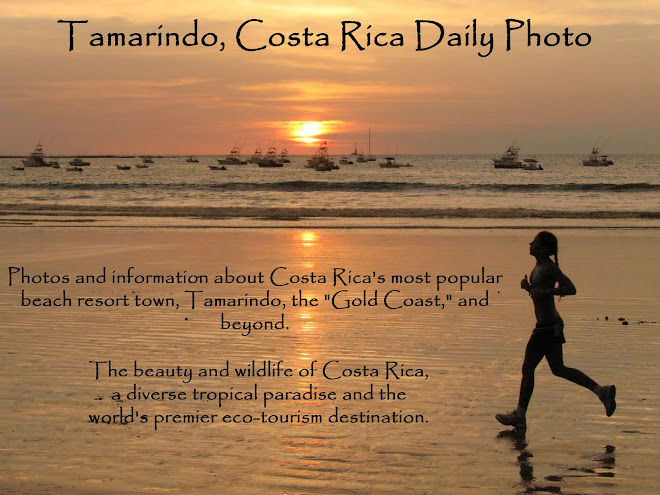

One of Tamarindo's leading chefs, Cordon-Bleu trained Israeli Shlomy Koren, has opened a new restaurant, Seasons. The top photo shows the restaurant, the second photo is my entree (filet mignon in red wine sauce, with fresh vegetables), and the third photo is my desert (entitled "chocolate collection").
With all of photos I have posted recently of activities in Tamarindo, I have neglected to show one of the major reasons that my wife and I decided to buy our two condos in Tamarindo -- the excellent and diverse choice of restaurants.

Shlomy has been one of the top chefs in Tamarindo for years. His new restaurant, Seasons, features seafood and other entrees, with Mediterranean influences. For example, there is red snapper filet that is pan seared with eggplant and red pepper coulis; mahi-mahi with peanut ginger cilantro lime tapanad: Middle Eastern chicken; and a vegetarian Moroccan couscous, with butternut squash, zucchini, onion with turmeric and cumin. The menu also includes shrimp scampi, seafood pasta and pesto rigatoni with spinach.
When I dined at Season's recently, the menu offered a choice of any appetizer, any entree and any desert for the combined price of $24 USD. While most prix fixe menus offer only one or two choices per course, my family appreciated that we could have the choice of anything on the menu for the combination price.
Here is a link to the website for the restaurant. Seasons is a little hard to find. It is located at the swimming pool area of the Hotel Arco Iris. There are signs to it on the right side of the main road leading up the hill from the beach, just a block past the turnoff for the road that goes to Langosta.
My wife (whose food tastes are much more highly developed than mine) and I were big fans of Shlomy's previous restaurant, Pachanga, and we are delighted that he has opened Seasons. It offers a fine dining experience at a price of about one half what one would expect to pay in the USA for a comparable dining experience.
 It has been a while since I have posted a photo of an iguana. Iguanas are common in Costa Rica, and can be seen even in the middle of town in Tamarindo. Sometimes they walk in the grass beside a sidewalk, but usually they can be seen in a tree.
It has been a while since I have posted a photo of an iguana. Iguanas are common in Costa Rica, and can be seen even in the middle of town in Tamarindo. Sometimes they walk in the grass beside a sidewalk, but usually they can be seen in a tree. 



































